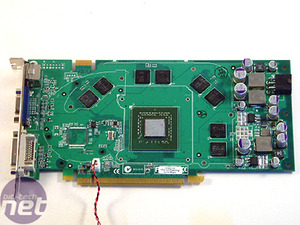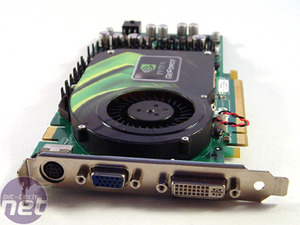

Above that price bracket, there has been the Radeon X800XL and GeForce 6800 GT fighting it out, with both cards being pretty evenly matched across the board. However, many consumers opted for the GeForce 6800 GT because of the additional feature set it had. Since the release of GeForce 7-series, both of these video cards have come down in price a little and they're now retailing for around £190-200.
Today, NVIDIA have announced a new video card designed to replace the GeForce 6800 Std. It goes by the name of GeForce 6800 GS, and features the same pipeline layout as GeForce 6800 Std, meaning twelve pixel pipelines and five vertex shaders. The card has a MSRP of around £170 inc VAT, so it is not quite direct competition to the Radeon X800GTO, and not really in direct competition with GeForce 6800 GT and Radeon X800XL either. At least, in terms of price.




The PCB closely resembles the GeForce 7800 GT's PCB, with some subtle differences in the power circuitry at the end of the card. The similarities become even more obvious when the video card is turned over. There are eight 32MB Samsung 2.0ns GDDR3 memory modules on the card clocked at 1000MHz, making a total of 256MB frame buffer on a 256-bit memory interface. The GS uses the 110 nanometre NV42 core, and our reference card operates at 425MHz.
GeForce 6800 GS is an SLI ready video card, so it is possible to a second card a little later on for improved gaming performance. However, if you are looking to buy two cards today, you might be better looking at something along the lines of GeForce 7800 GT or Radeon X1800XL.



MSI MPG Velox 100R Chassis Review
October 14 2021 | 15:04





Want to comment? Please log in.